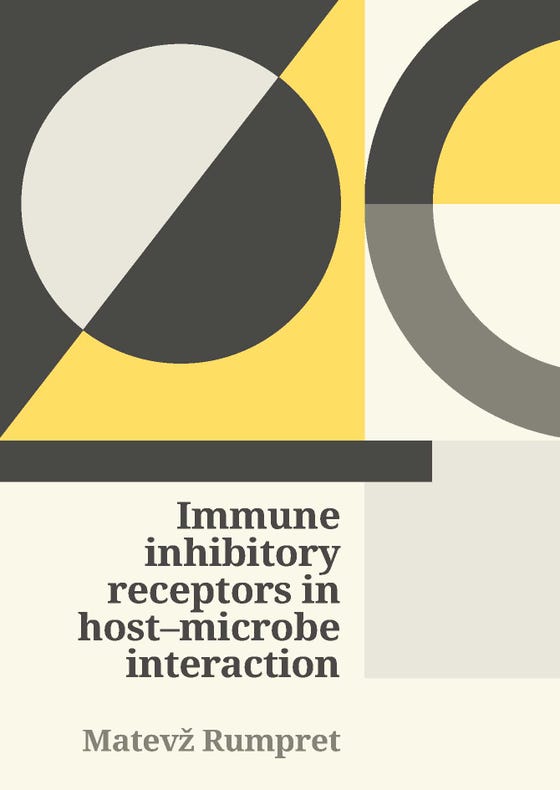Mar 17: Immune inhibitory receptors in host-microbe interaction

PhD research by Matevž Rumpret at UMC Utrecht has identified two new groups of ligands for one of the inhibitory receptors on immune cells for which until now no ligands were known. It was also demonstrated that inhibitory receptors on immune cells perform different functions in different situations, and that not all inhibitory receptors perform the same functions. Rumpret therefore proposes that some inhibitory receptors may recognize molecular patterns analogous to how activating receptors recognize them.
The immune system protects the organism from disease, but inappropriate immune responses can also cause damage. Inhibitory receptors can dampen immune responses and prevent tissue damage and inflammatory diseases. In the human genome, genes for >300 potential immune inhibitory receptors are present. In his PhD research, Matevž Rumpret (Center for Translational Immunology, UMC Utrecht) and colleagues explored the possible roles that inhibitory receptors play in regulating immune responses, in particular the response to bacteria.
Two different groups of inhibitory receptors
Based on his research, Matevž suggests that there are two different groups of inhibitory receptors with separate functions and he used mathematical models to illustrate their possible modes of operation. He further identified the human S100 family of proteins as the first known ligands for the inhibitory receptor Signal Inhibitory Receptor on Leukocytes-1 (SIRL-1). S100 proteins are released from damaged cells, and the investigators showed that SIRL-1 recognizes several S100 proteins, suppressing production of reactive oxygen species by neutrophils. Matevž suggests that SIRL-1 activation by S100 proteins may help limit tissue damage caused by the immune response.
Bacterial peptides
Matevž Rumpret also showed that a group of bacterial peptides, the staphylococcal phenol-soluble modulins, and the structurally and functionally related human peptide cathelicidin LL-37, activate SIRL-1. This suggests that α-helical peptides with an amphipathic arrangement of hydrophobicity may represent a potential molecular pattern recognized by SIRL-1. Furthermore, he argues in his thesis that also other inhibitory receptors recognize endogenous and microbial patterns. Rumpret and co-workers propose that these inhibitory pattern recognition receptors provide context and help to mediate tolerance to microbes and balance responses to danger signals The insights gained here will guide future directions for using SIRL-1 and other inhibitory receptors as therapeutic targets.
Matevž Rumpret summarizes: “We identified two new groups of ligands for one of the inhibitory receptors on immune cells for which until now no ligands were known. We have demonstrated that inhibitory receptors on immune cells perform different functions in different situations, and that not all inhibitory receptors perform the same functions. We therefore propose that some inhibitory receptors may recognize molecular patterns analogous to how activating receptors recognize them.”
PhD defense
Matevž Rumpret (1988, Ljubljana, Slovenia) defended his PhD thesis on March 17, 2022 at Utrecht University. The title of his thesis is “Immune inhibitory receptors in host-microbe interaction”. Supervisor was prof. dr. Linde Meyaard (Center for Translational Immunology, UMC Utrecht). In November 2021, Matevž joined the research group of dr. Alex McCarthy at Imperial College London (U.K.) as a post-doc where he continues to study the interactions between the immune system and microbes.

